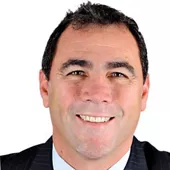Initial situation
68 year old male, non-smoker, presenting Type 2 Diabetes under control. Undergone previous dental implant treatments with positive results in the past, the patient presented tooth to the office with tooth 36 in non-restorable situation with indication for extraction requested dental implant as the treatment choice. Different treatment possibilities have been discussed:
- Extraction, healing and conventional implant placement.
- Extraction and immediate placement with conventional healing and then final prosthesis.
- Extraction, implant placement and immediate functional loading of the implant.
In his previous treatments the patient has experienced successful treatment outcome with 1-Tooth 1-Time technique, which is a technique that provides the final crown to be produced and seated in immediate occlusal function right after the surgical procedure. For this particular case, given the systemic condition it was suggested to provide a crown that could be put into immediate function but with temporary material during the healing phase making sure the systemic condition has not affected the soft tissue healing and contours when starting the final crown. After full discussion, the patient opted for solution 3. All the parameters supported the chosen treatment.
Treatment planning
After careful assessment of the patient’s anatomical conditions through panoramic radiograph and CBCT scan (Fig. 01, 02 and 03), it was possible to verify ideal interradicular bone availability allowing the following treatment planning:
- Minimally traumatic tooth extraction
- Immediate implant placement (Straumann® TLX®, Ø3.75mm x 12mm)
- Intra-oral scanning
- Temporary crown design and chairside milling
- Immediate provisional crown in function
- After osseointegration and soft tissue maturation proceed with final crown.
Surgical procedure
The surgical procedure was carried out under conscious sedation with local anaesthetic, and routine sterile preparation for surgical procedures were followed.
To maintain the gingival and surrounding walls as preserved as possible, a flapless minimally traumatic approach to the extraction was chosen by splitting the roots in different directions (Fig. 04). Extra precautions were made not to inflict any trauma, even by the suction device on the papilla and any surrounding soft tissue. A simple orthodontic elastic is placed around the adjacent teeth to delimitate the buccal and lingual red zone margins that should not be encroached upon.
It was possible to verify solid interradicular bone availability (Fig. 05) extending further the limits of the root apexes allowing for a centrally oriented osteotomy. The implant bed preparation started with the use of the Needle Drill at 800 rpm, followed by the Ø2.2mm and Ø2.8mm drills (Fig. 06 to 10). The implant was placed with the use of ratchet and torque control reaching the desired final position with 50Ncm torque value (Figs.11, 12 and 13). The sockets are then augmented with bovine derived bone substitute impregnated with a-PRF finalized by sutures to keep the a-PRF application immobile, with a 3mm healing abutment in position (Figs. 14, 15, 16 and 17).
The patient also received intra operative IV antibiotic with 4 mg dexamethasone and received standard post operatory care with analgesics, chlorhexidine mouthwash and antibiotic for 5 days.
Prosthetic procedure
The patient was sent to the prosthodontic and the immediate restoration technical work followed a digital workflow that included an intraoral scanner DW (IOS; TRIOS Pod, 3Shape, Copenhagen, Denmark) and CAD/CAM processing using Straumann CARES® Digital Solutions (Dental Wings, Montreal, Canada). A PMMA crown was milled and cemented to a prefabricated titanium abutment (Variobase®, Institute Straumann AG, Basel, Switzerland)(Fig. 18). A few hours later the patient was leaving the office with an immediate implant placed and functional provisional screw-retained restoration (Fig. 19 and 20).
In Taiwan to celebrate the Chinese New Year, the patient was caught up in the first COVID-19 restrictions and the return to the office was compromised for a few days.
Upon the patient’s return the final crown was initiated by another intra oral scanning to copy all the gingival contours after healing time (Figs. 21 and 22). A full monolithic zirconia crown was milled and cemented to a Variobase® 5mm x AH 6mm and properly seated with occlusal and contact points checked. The screw access was properly closed with Teflon tape and light curing composite (Fig 23).
Treatment outcomes
From a clinical perspective the immediate placement and function was very well indicated as it can be verified through the gingival margins and health; and bone levels throughout the healing phase, final and 1 year follow up pictures. (Figs. 24 to 29)
The patient very satisfied with the result in relation to chewing performance and esthetics. In addition given his time restriction to undergo several treatment appointment, the possibility to have a very close to final restoration immediately after the surgical procedure requiring only another session to finalize the treatment, according to him it was by far more desirable than his initial dental implant procedures.
